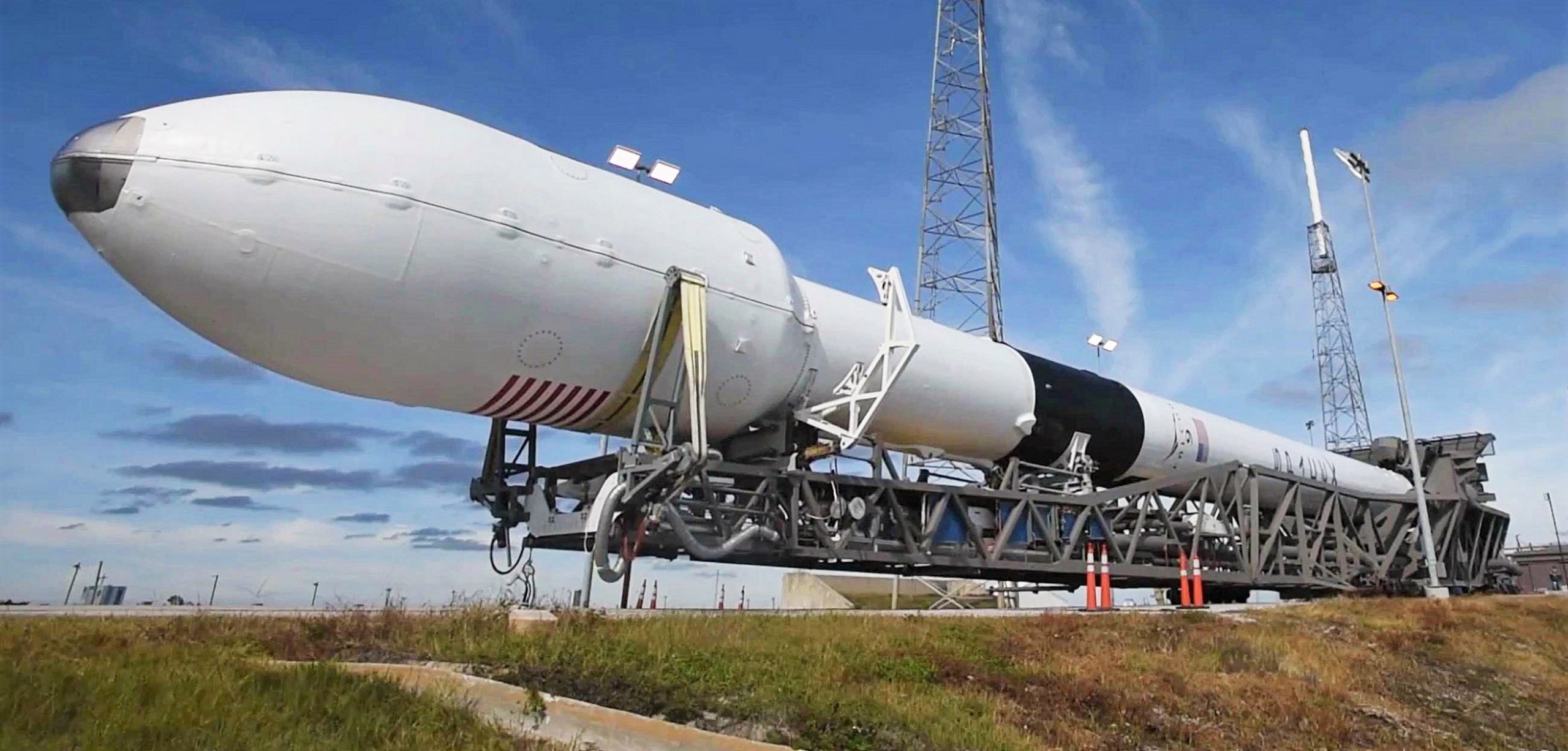
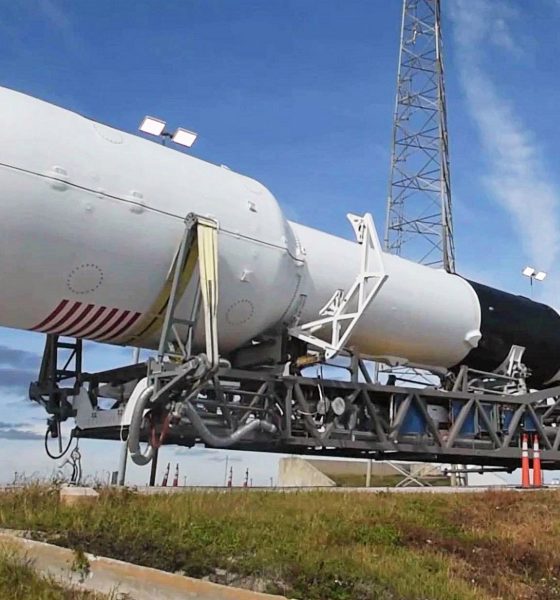
News
SpaceX Falcon 9’s next major US Air Force launch slips into early 2020 ahead of busy Q4
According to an August 20th update from the US Air Force’s Space and Missile Systems Center (SMC), SpaceX’s next dedicated USAF launch – the third completed GPS III spacecraft – has slipped one month and is now scheduled no earlier than (NET) January 2020.
Known as GPS III Space Vehicle 03 (SV03), SpaceX’s next US military launch will follow just a few months after United Launch Alliance (ULA) is set to launch GPS III SV02, scheduled to lift off at 9am EDT, August 22nd. SpaceX kicked off the lengthy GPS III launch campaign in December 2018, successfully placing the ~3900 kg (8600 lb) communications and geolocation spacecraft into a transfer orbit. The mission also marked SpaceX’s first intentionally expendable Falcon 9 Block 5 launch, a trend that may or may not continue with the company’s next GPS launch.
Known as GPS Block IIIA, SV01-03 are the first three of a batch of 10 spacecraft total, produced by Lockheed Martin for an anticipated cost of roughly $600M apiece. The US Government Accountability Office (GAO) expects [PDF] little to no cost savings per unit for Block IIIA’s follow-up, Block IIIF, in which 22 additional GPS III spacecraft will be built to fully upgrade the military’s GPS constellation. GAO estimates that those 22 satellites – likely to also be built by Lockheed Martin – will cost an incredible $12B, or ~$550M apiece.
On the scale of the US military’s woefully inefficient space procurement apparatus, ~$600M per satellite is sadly a pretty good deal. Two equally modern USAF satellite acquisition programs – the Advanced Extremely High Frequency (AEHF) and Space-Based Infrared System constellations – have both surpassed their initial cost estimates by more than a factor of two. Over the entire program, GAO estimates that six AEHF satellites no less than $3 billion each, while SBIRS is in even worse shape with six new satellites expected to cost $3.2 billion apiece.
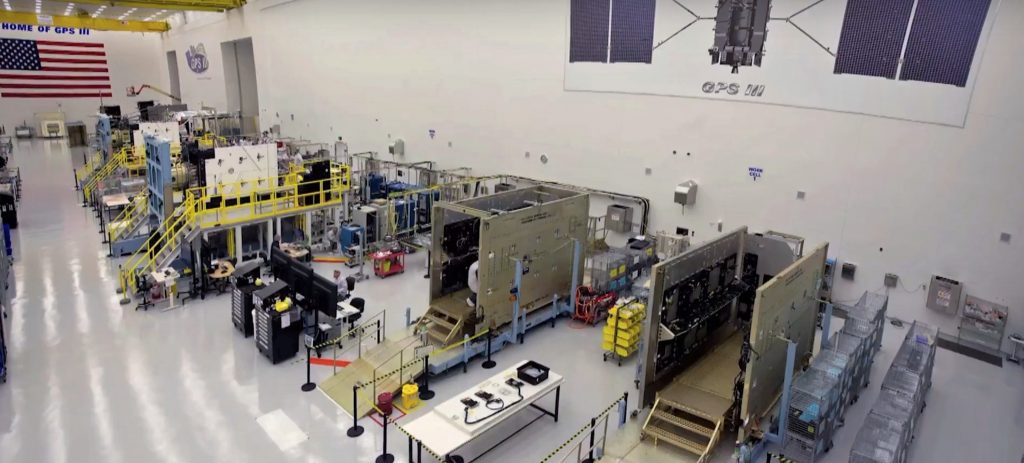
Meanwhile, the Raytheon-built ‘OCX’ ground systems needed to take advantage of the ~$19B GPS III satellite upgrades has been just as much of an acquisition boondoggle, nearly doubling in cost over the last few years, bringing its final cost to no less than $6.2B after years of delays. All told, completing the upgraded GPS III constellation can be expected to cost a bare minimum of $25B. This cost doesn’t even include launches, but the cost of launching all the spacecraft is – in a rare instance – going to be a small fraction of the overall acquisition, perhaps $3-4B for all 32 satellites.
Regardless of the nightmarish costs and general inefficiency, Lockheed Martin and the USAF continue to slowly march towards initial GPS III operability. August 22nd’s ULA launch and January 2020’s SpaceX launch will take significant steps towards that capability, and will – with any luck – be followed by an additional two Falcon 9 GPS III launches in 2020. Six of ten IIIA satellites have already had launch contracts awarded, five of six of which were awarded to SpaceX.
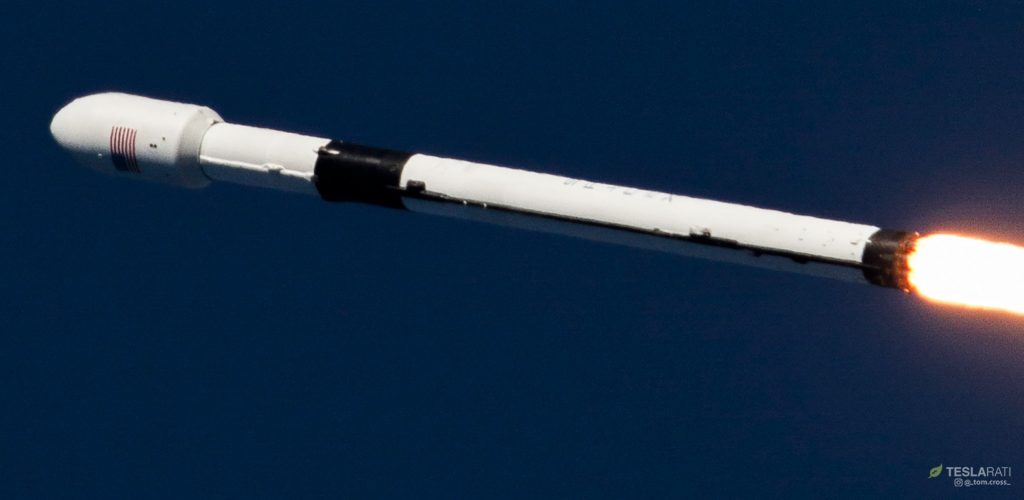
End-of-year fireworks
GPS III SV03’s slip from December 2019 to January 2020 comes as plans for an ambitious final quarter have begun to take shape for SpaceX. Oddly, SpaceX is currently going through more than two months of downtime between its most recent launch (AMOS-17, August 6th) and its next mission (Starlink 1, NET late October). This will be the longest SpaceX has gone without launching since a catastrophic Falcon 9 failure grounded the company’s launch operations from September 2016 to January 2017.
By all appearances, customers’ payloads just aren’t ready, while SpaceX’s own Starlink constellation team is hard at work updating the satellite design and preparing for two back-to-back launches as early as October and November, potentially placing 120 high-performance satellites in orbit.
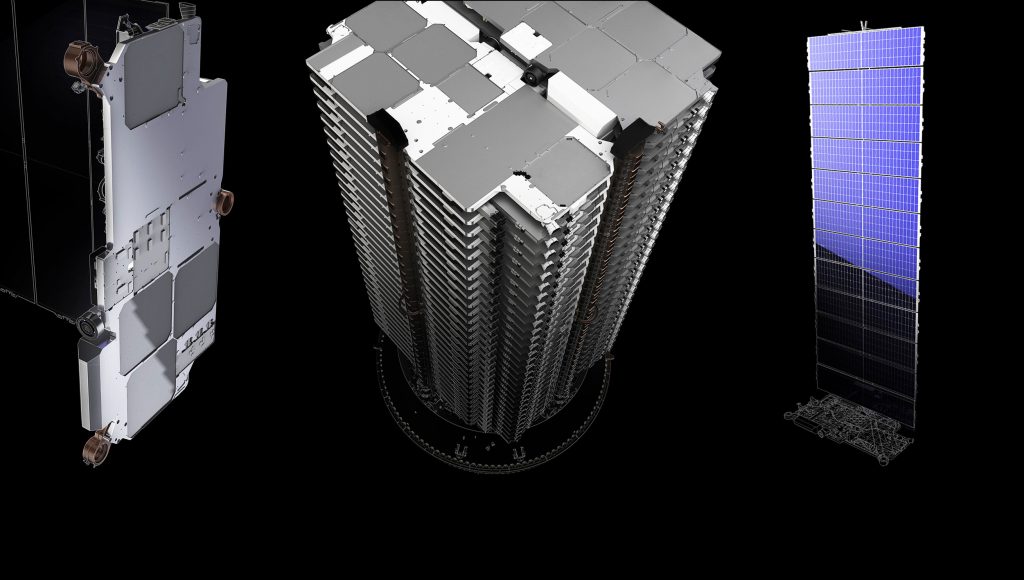
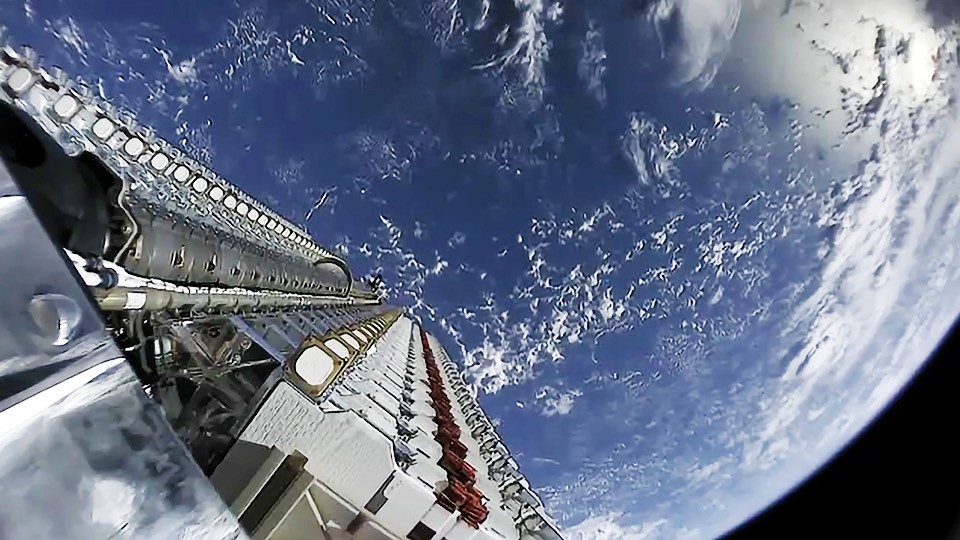
Aside from two Starlink launches scheduled in late-October and November, SpaceX has at least six other missions that could potentially launch in Q4 2019.
| Launch | Date (No Earlier Than) |
| Starlink 1 | October 17th |
| Starlink 2 | November 4th |
| Crew Dragon – In-Flight Abort | November 11th |
| ANASIS-II – South Korea | November – TBD |
| JCSat-18/Kacific-1 | November – TBD |
| Cargo Dragon CRS-19 | December 4th |
| Sirius XM-7 (SXM-7) | Q4 2019 – TBD |
| Crew Dragon – Demo-2 | December – TBD |
A lack of updates from Sirius XM and the fact that Crew Dragon’s Demo-2 launch will rely entirely upon the successful completion of its prior In-Flight Abort (IFA) mean that both will very likely slip into 2020. The remaining six launches, however, have a very decent chance of launching in 2019, assuming everything goes perfectly during satellite, Falcon 9, and launch pad pre-flight preparations.
SpaceX has successfully completed six launches in three months several times before, so six launches in Q4 2019 is entirely achievable, even if a pragmatist would do well to expect additional delays into 2020.
Check out Teslarati’s Marketplace! We offer Tesla accessories, including for the Tesla Cybertruck and Tesla Model 3.

News
Tesla Full Self-Driving v14.2 – Full Review, the Good and the Bad

Tesla rolled out Full Self-Driving version 14.2 yesterday to members of the Early Access Program (EAP). Expectations were high, and Tesla surely delivered.
With the rollout of Tesla FSD v14.2, there were major benchmarks for improvement from the v14.1 suite, which spanned across seven improvements. Our final experience with v14.1 was with v14.1.7, and to be honest, things were good, but it felt like there were a handful of regressions from previous iterations.
While there were improvements in brake stabbing and hesitation, we did experience a few small interventions related to navigation and just overall performance. It was nothing major; there were no critical takeovers that required any major publicity, as they were more or less subjective things that I was not particularly comfortable with. Other drivers might have been more relaxed.
With v14.2 hitting our cars yesterday, there were a handful of things we truly noticed in terms of improvement, most notably the lack of brake stabbing and hesitation, a major complaint with v14.1.x.
However, in a 62-minute drive that was fully recorded, there were a lot of positives, and only one true complaint, which was something we haven’t had issues with in the past.
The Good
Lack of Brake Stabbing and Hesitation
Perhaps the most notable and publicized issue with v14.1.x was the presence of brake stabbing and hesitation. Arriving at intersections was particularly nerve-racking on the previous version simply because of this. At four-way stops, the car would not be assertive enough to take its turn, especially when other vehicles at the same intersection would inch forward or start to move.
This was a major problem.
However, there were no instances of this yesterday on our lengthy drive. It was much more assertive when arriving at these types of scenarios, but was also more patient when FSD knew it was not the car’s turn to proceed.
Can report on v14.2 today there were ZERO instances of break stabbing or hesitation at intersections today
It was a significant improvement from v14.1.x
— TESLARATI (@Teslarati) November 21, 2025
This improvement was the most noticeable throughout the drive, along with fixes in overall smoothness.
Speed Profiles Seem to Be More Reasonable
There were a handful of FSD v14 users who felt as if the loss of a Max Speed setting was a negative. However, these complaints will, in our opinion, begin to subside, especially as things have seemed to be refined quite nicely with v14.2.
Freeway driving is where this is especially noticeable. If it’s traveling too slow, just switch to a faster profile. If it’s too fast, switch to a slower profile. However, the speeds seem to be much more defined with each Speed Profile, which is something that I really find to be a huge advantage. Previously, you could tell the difference in speeds, but not in driving styles. At times, Standard felt a lot like Hurry. Now, you can clearly tell the difference between the two.
It seems as if Tesla made a goal that drivers should be able to tell which Speed Profile is active if it was not shown on the screen. With v14.1.x, this was not necessarily something that could be done. With v14.2, if someone tested me on which Speed Profile was being used, I’m fairly certain I could pick each one.
Better Overall Operation
I felt, at times, especially with v14.1.7, there were some jerky movements. Nothing that was super alarming, but there were times when things just felt a little more finicky than others.
v14.2 feels much smoother overall, with really great decision-making, lane changes that feel second nature, and a great speed of travel. It was a very comfortable ride.
The Bad
Parking
It feels as if there was a slight regression in parking quality, as both times v14.2 pulled into parking spots, I would have felt compelled to adjust manually if I were staying at my destinations. For the sake of testing, at my first destination, I arrived, allowed the car to park, and then left. At the tail-end of testing, I walked inside the store that FSD v14.2 drove me to, so I had to adjust the parking manually.
This was pretty disappointing. Apart from parking at Superchargers, which is always flawless, parking performance is something that needs some attention. The release notes for v14.2. state that parking spot selection and parking quality will improve with future versions.
Any issues with parking on your end? 14.1.7 didn’t have this trouble with parking pic.twitter.com/JPLRO2obUj
— TESLARATI (@Teslarati) November 21, 2025
However, this was truly my only complaint about v14.2.
You can check out our full 62-minute ride-along below:
Elon Musk
SpaceX issues statement on Starship V3 Booster 18 anomaly
The incident unfolded during gas-system pressure testing at the company’s Massey facility in Starbase, Texas.

SpaceX has issued an initial statement about Starship Booster 18’s anomaly early Friday. The incident unfolded during gas-system pressure testing at the company’s Massey facility in Starbase, Texas.
SpaceX’s initial comment
As per SpaceX in a post on its official account on social media platform X, Booster 18 was undergoing gas system pressure tests when the anomaly happened. Despite the nature of the incident, the company emphasized that no propellant was loaded, no engines were installed, and personnel were kept at a safe distance from the booster, resulting in zero injuries.
“Booster 18 suffered an anomaly during gas system pressure testing that we were conducting in advance of structural proof testing. No propellant was on the vehicle, and engines were not yet installed. The teams need time to investigate before we are confident of the cause. No one was injured as we maintain a safe distance for personnel during this type of testing. The site remains clear and we are working plans to safely reenter the site,” SpaceX wrote in its post on X.
Incident and aftermath
Livestream footage from LabPadre showed Booster 18’s lower half crumpling around the liquid oxygen tank area at approximately 4:04 a.m. CT. Subsequent images posted by on-site observers revealed extensive deformation across the booster’s lower structure. Needless to say, spaceflight observers have noted that Booster 18 would likely be a complete loss due to its anomaly.
Booster 18 had rolled out only a day earlier and was one of the first vehicles in the Starship V3 program. The V3 series incorporates structural reinforcements and reliability upgrades intended to prepare Starship for rapid-reuse testing and eventual tower-catch operations. Elon Musk has been optimistic about Starship V3, previously noting on X that the spacecraft might be able to complete initial missions to Mars.
Investor's Corner
Tesla analyst maintains $500 PT, says FSD drives better than humans now
The team also met with Tesla leaders for more than an hour to discuss autonomy, chip development, and upcoming deployment plans.

Tesla (NASDAQ:TSLA) received fresh support from Piper Sandler this week after analysts toured the Fremont Factory and tested the company’s latest Full Self-Driving software. The firm reaffirmed its $500 price target, stating that FSD V14 delivered a notably smooth robotaxi demonstration and may already perform at levels comparable to, if not better than, average human drivers.
The team also met with Tesla leaders for more than an hour to discuss autonomy, chip development, and upcoming deployment plans.
Analysts highlight autonomy progress
During more than 75 minutes of focused discussions, analysts reportedly focused on FSD v14’s updates. Piper Sandler’s team pointed to meaningful strides in perception, object handling, and overall ride smoothness during the robotaxi demo.
The visit also included discussions on updates to Tesla’s in-house chip initiatives, its Optimus program, and the growth of the company’s battery storage business. Analysts noted that Tesla continues refining cost structures and capital expenditure expectations, which are key elements in future margin recovery, as noted in a Yahoo Finance report.
Analyst Alexander Potter noted that “we think FSD is a truly impressive product that is (probably) already better at driving than the average American.” This conclusion was strengthened by what he described as a “flawless robotaxi ride to the hotel.”
Street targets diverge on TSLA
While Piper Sandler stands by its $500 target, it is not the highest estimate on the Street. Wedbush, for one, has a $600 per share price target for TSLA stock.
Other institutions have also weighed in on TSLA stock as of late. HSBC reiterated a Reduce rating with a $131 target, citing a gap between earnings fundamentals and the company’s market value. By contrast, TD Cowen maintained a Buy rating and a $509 target, pointing to strong autonomous driving demonstrations in Austin and the pace of software-driven improvements.
Stifel analysts also lifted their price target for Tesla to $508 per share over the company’s ongoing robotaxi and FSD programs.








